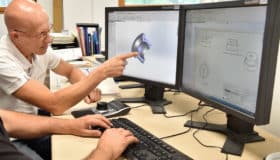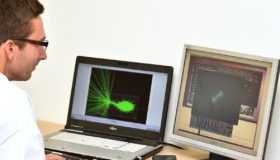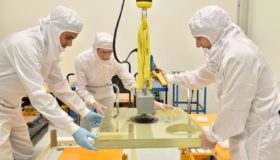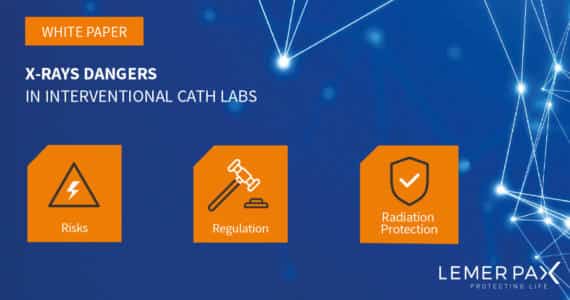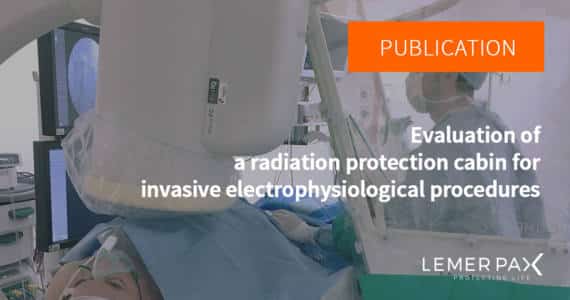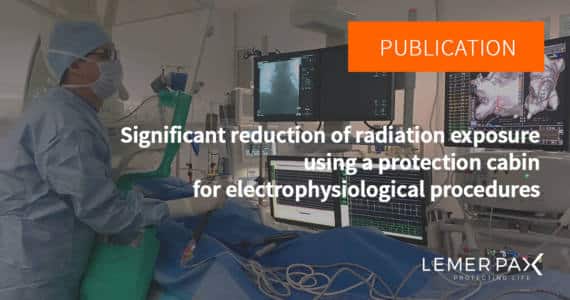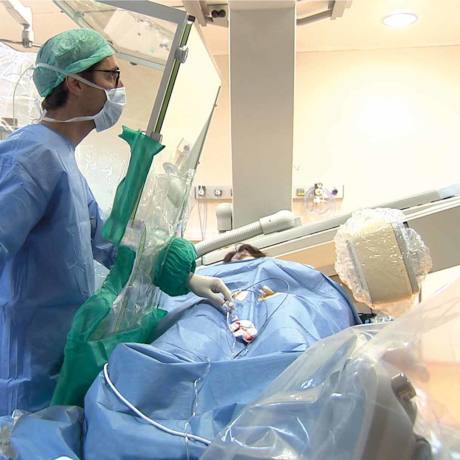
Performance of a radiation protection cabin during implantation of pacemakers or cardioverter defibrillators
SYLVAIN PLOUX, M.D., PHILIPPE RITTER, M.D., MICHEL HAÏSSAGUERRE, M.D., JACQUES CLEMENTY, M.D., and PIERRE BORDACHAR, M.D.
From the Hôpital Cardiologique Haut Leveque, University Bordeaux 2, Bordeaux-Pessac, France. Journal of Cardiovascular Electrophysiology. Novembre 2009
Pacemaker implants are associated with a high cumulative exposure of the operators to radiation. Standard radiation protection with lead aprons is incomplete and the cause of spine disorders. A radiation protection cabin offers complete protection by surrounding the operator, without requiring a lead apron.
METHOD & RESULTS:
60 patients undergoing implantations of permanent pacemakers or ICD have been randomly assigned, divided in 2 groups :
- Control group : 0.5 mm lead-equivalent apron (n=30)
- Radiation protection group : n=30
Radiation exposure was measured using personal electronic dosimeters placed on thorax, back, and head of the operator.
The cabins are covered with a dedicated sterile field to preserve rigorous aseptic conditions.
C-arm used ALLURAXper®FD10 (Philips, Eindhoven, The Nedtherlands) at low doses.
The characteristics of the 2 study groups, including age, sex distribution, treatment indications, devices and number of leads implanted, and percutaneous access (cephalic or subclavian) were similar
This randomized study showed that the use of a radiation protection cabin during implantation of single or dual chamber cardiac devices was associated with neither longer procedures or fluoroscopic exposure, nor a higher rate of complications.
The recorded doses are the following :
- The mean radiation dose to the head, normalized for fluoroscopy duration, was significantly lower in the cabin (0.040±0.032 μSv/min) than in the control group (1.138±0.560 μSv/min)
- The radiation dose to the thorax (0.043±0.027) vs (0.041±0.040 μSV/min) ; the back (0.038±0.029) vs (0.033±0.018 μSv/min) in the cabin vs control group were similar
CONCLUSION:
The use of a radiation protection cabin markedly decreased the exposure of the operator to radiation, and eliminated the need to wear a lead apron, without increasing the procedural time or complication rate during implantation of pacemaker and ICD.
Read the full publication clicking here.
